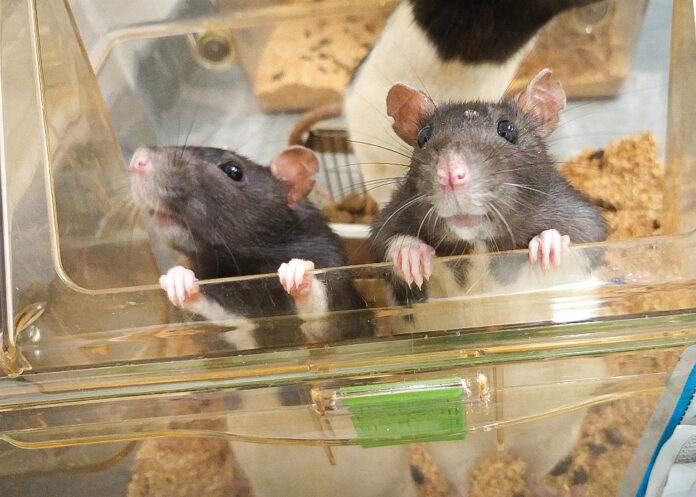
A study conducted by researchers at the University of Lethbridge has found that whether an experimenter is male or female can significantly impact results when testing rats—a variable that goes unaccounted for in most experiments involving rodents.
“Both male and female animals were stressed out in the presence of a male experimenter,” Jamshid Faraji, a research associate at the Canadian Centre for Behavioural Neuroscience and lead author of the July study, said.
Male and female experimenters worked with each rat individually five minutes per day for 10 days. Faraji said, in some cases, the experimenter was physically present in the same room as the rat. In other cases, unwashed T-shirts worn by the experimenters were placed in the room instead. He added that the rats’ stress levels were the same in both situations.
“The animals showed similar stress responses at the behavioural levels, hormonal levels and even the thermographic [levels],” Faraji said.
A 2014 McGill University study showed similar results, demonstrating experimenters’ sex to be an important factor to consider when measuring pain, perception and stress responses in rodents. Despite an increase in stress levels among rodents held by male experimenters, the answer as to why remains unclear.
“Both male and female animals were stressed out in the presence of a male experimenter.”
Faraji said his team wants to investigate how and why rodents recognize experimenters’ sex. Gerlinde Metz, a U of L neuroscience professor involved in the study, said male and female humans each have a smell that animals can distinguish between.
“We all have a different molecular makeup in our pheromones,” she said.
Faraji added factors concerning vision and smell could determine how rats respond to the experimenter present. Additional factors often go unaccounted for in research involving rodents, according to Metz. Some of these include where the animals came from, how they were raised and bred, how they are handled by experimenters and how often their cages are cleaned.
“[Researchers] need to do a more powerful job in recording them and accounting for potential confounding factors,” Metz said, adding that the scientific journals where these findings are published must accommodate such factors as well.
Metz and Faraji hope their study results will lead to an improvement in standards for research and studies involving rodents. They agree that researchers should constantly look for ways to translate their results from animals to humans.
“It is important to translate the findings to help deal [with] and manage human diseases to find better treatments,” Metz said.
Mireal Ambeskovic, a postdoctoral fellow involved in the study, said in an email to the Charlatan that these results should be taken seriously, especially by researchers in the mental health and stress fields.
“If [researchers] are finding mental health-related outcomes or stress-related outcomes, these results may be skewed by the experimenter’s sex,” Ambeskovic said. “This may have long-term consequences for drug development and treatments for mental illnesses.”
Metz said people are often very critical of laboratory animals and their experimenters and don’t see the value in this type of research.
“We have to do preclinical research to identify causes of diseases [and] mechanisms, and to find new treatments for human diseases,” Metz explained, adding she and the others involved in the study are animal lovers. “You have to do this [kind] of research with your heart in order to do proper research with animals in the laboratory.”
Featured image provided by Jamshid Faraji.





